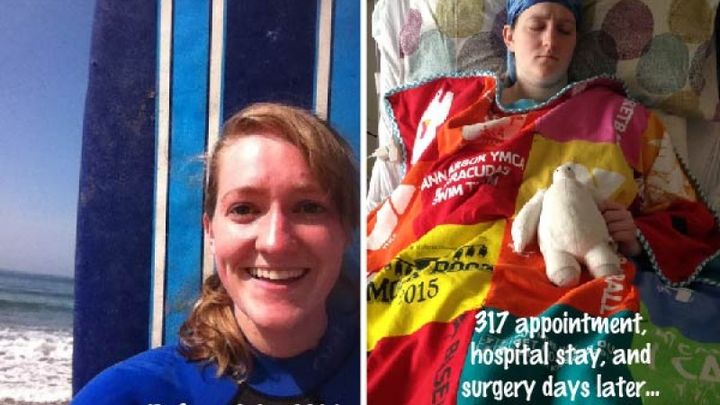
Get Jordan's Splash Back!
Donation protected
Hello friends! I am so excited to share something I found that could help me get back in the pool!!
For those of you who have been part of my story, strengthening me (and my family) throughout this difficult journey, you probably know my what has been going on from my posts on CarePages (page name: "JordieBugKeen") or text message updates from my awesome Mom. If you don't know the story I've been living, scroll down and I'll catch you up on this craziness.
This "long story short" letter is for the bold and brave who have been standing strong with me through it all:
WHAT!? Is this real life?! This is a HICKMAN drysuit, designed specifically for people like me who have a Hickman central line and it could help me get back in the pool!! Now with two different ports to protect from getting wet, spending time in the water is difficult and potentially dangerous. I’ve been on the lookout for a solution but most dry suits cover the whole body and are usually baggy -- not necessarily designed for being active in the water. This suit is a “shortie”: it starts above the knee and elbow and can even be designed to accommodate wearing an IV nutrition backpack while in the water. AMAZING!!!
It all sounds too good to be true, so (of course) here's the catch: the suit is made in England by Hammond Drysuit and is pretty expensive. Additionally, it's a pretty big leap to get back in the pool from where I am with my health now. To help build up my cardiovascular capacity, exercising on a recumbent bike is ideal with the postural orthostatic tachycardia (POTS) because it will help my heart build strength without the additional strain of being upright, causing my heart to race and feel light headed. My team at the Cleveland Clinic have recommended adding five minutes on a recumbent bike, three times a week, to my current at-home PT program. While we could buy a recumbent exercise bike for the home, a better suggestion was to invest in a quality recumbent trike that, like the drysuit, would be beneficial for my heart physically and emotionally. The bike suggested to help make this transition to the pool is not an exercise machine stuck indoors: it's a real bike designed for outdoor use and can be also be used stationary inside during the winter. Most importantly, because it can be fitted with an electric motor, it would allow me to join in on family bike rides and go on runs with my sister - something I deeply miss.
You probably know that I have a difficult time asking for help, whether the request is as small as helping me pick something up off the floor or for something big like this: I need your help to fundraise $2,000 to help me return to the water. To have the drysuit made and shipped to the US is $600. Brand new, the recommended recumbent trike can cost as much as $3000 but I've scoured the internet and found a plethora of used ones in good condition for around $1,400.
$600 + $1400 = $2,000 for a priceless, much needed boost in my quality of life.
A lot of things have changed my life over the past two years in a direction that I’m not a fan of. The pool has been an essential part of my rehabilitation in the past, so a recumbent bike and Hickman drysuit could be life changing for the better. Please help me make a splash in the right direction by supporting me with a donation towards this cycle and suit!
With lots of love and gratitude,
Jordan
* * * * * * * * * * * * * * * * * * * * * * * * * * * * * * * * * * * * * * *
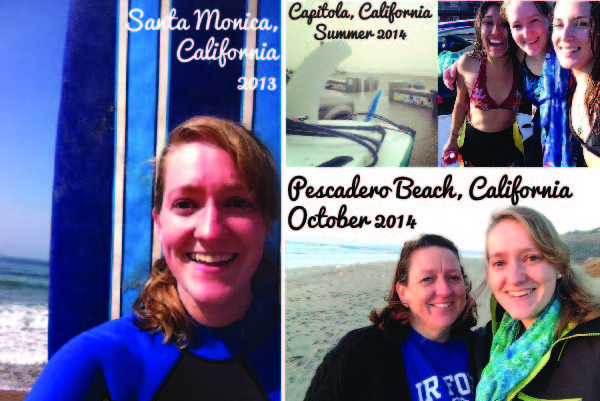
For those of you who may not know how I, (a healthy, able bodied, independent, 23 year old marathon runner and former national athlete, with great friends and a full time job I loved in California), turned into an almost 25 year old who is completely dependent on my family and caregivers (as I am not safe to drive, unable to walk unassisted, struggling with fine motor skills, a fall risk needing constant supervision, and can't digest food, etc.), this letter is just for you. Hopefully it'll help wrap your mind and heart around this chaotic, foreign life my family and I have been experiencing:
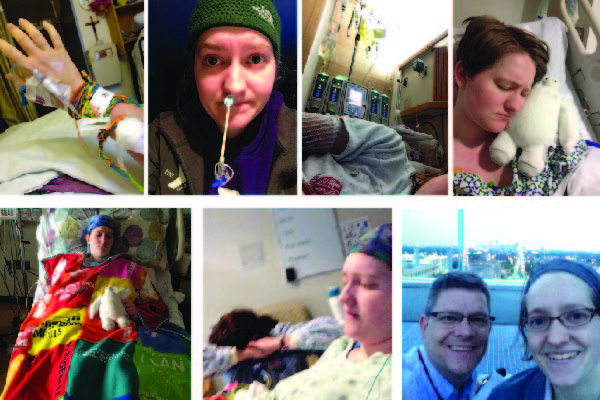
Hi friends,
My life has been turned upside down for almost two years now since catching an infection in 2014 from one of my favorite places in the whole world: the ocean.
In the summer of 2014, I was under the warm June sun in California with sixty other adults, all strangers running in the grass, playing tag like we were kids. The gentle giants of the redwood forest watched over us, swaying slightly in the background. To say this first day of staff training was a magical start to the summer camp season at YMCA Camp Campbell would be an understatement. I ended up 2,000 miles from home in this grassy field, away from the Ann Arbor YMCA after four incredible summers of learning and leading day camp in Michigan, because I fell in love with surfing while visiting California the year before. Santa Cruz, a surfing hot spot, was a short drive from camp. It was on the beach and the boardwalk that several of the sixty strangers turned into some of my greatest friends.
On our 4th of July weekend off, we were on the beach and I was in the water body boarding with a handful of friends. The next day, I felt so sick. We were back at camp in an all staff meeting to kick off another life changing week for our campers when I had to excuse myself from the meeting and barely made it to the bathroom to throw up. I was feeling a little feverish but brushed it away because, after years of dealing with Complex Regional Pain Syndrome (CRPS) as a teen, I was a pro at persevering through physical difficulties to do what needed to get done. But, I was unaware of how vulnerable my body actually was after dealing with CRPS (also known as Reflex Sympathetic Dystrophy or RSD). It can cause widespread pain out of proportion to the injury that caused it and is considered a neuro-inflammatory disorder, meaning it has both neurological and immunological complications.
For me, CRPS/RSD started as a 12 year old after spraining my knee while skiing for the first time. It took almost two years to diagnose it and another three years to find an effective treatment. I spent those five years on crutches or in a wheelchair before the miracle of a spinal cord stimulator (SCS) took away my severe pain with the touch of a button. Untethered from the pain, I found what felt like limitless freedom.
I launched myself into a life that was beyond imagination, more than anything I hoped for years that I would be able to experience. I went to college and made wonderful friends. I ran the Chicago Marathon.
I traveled with Young Life to serve at a camp in the Dominican Republic. I got to go to be the older sister again - a role in our family that I take great pride in. I cheered my brother on at his football games and went out to lunch with my sisters.
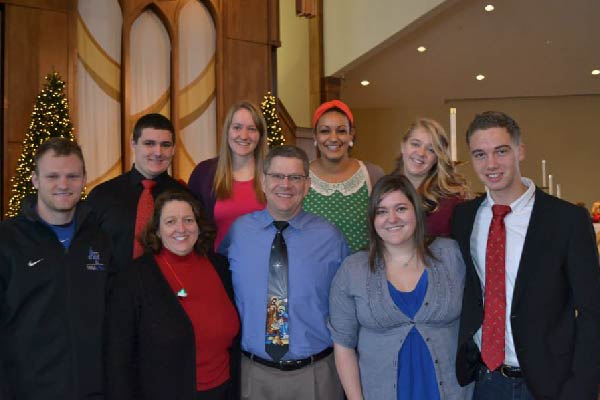 Christmas 2013
Christmas 2013
I was vice captain of the national netball team and competed internationally in South Africa for the World Games. I held (and continue to hold) a passion for the Y and loved serving our community through youth sports and camp.
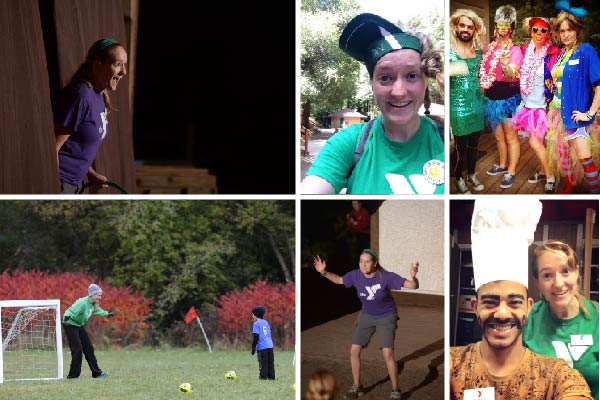
My world was full of possibility and I could finally say "yes" to so many adventures, including moving to California. I felt far from health challenges of the past and didn't imagine for a minute that I'd be back in crisis mode today.
Above: a full body, uncontrollable and painful tremor. This is only 23 seconds and it never let up, continuing at this pace for nearly two hours before my muscles lock up, contorting my body in excruciating pain.
My doctors at the Cleveland Clinic, who treated the CRPS/RSD when I was a teen, weren’t at all shocked that I was the only one of my six friends in the ocean to become seriously ill, specifically because of my history with CRPS/RSD. Not only was I oblivious to my delicate immune system, I also had no idea that the moment I excused myself from our meeting to hustle to the bathroom would just the beginning of the many, many days ahead of constant nausea, abdominal pain, and vomiting.
Fast forward to September of 2015: my parents and I are sitting in a waiting room at the Cleveland Clinic. It was the day we'd have results about the extent of damage the infection had on my digestive system function. In between this moment in Cleveland and when I ran to the bathroom at camp the year and a half before, huge changes happened. I left a month long hospitalization at Stanford in December of 2014 with two new diagnoses and one heart breaking resignation from my year round job at camp. I moved back to Michigan, dependent on my family and the expertise of the Cleveland Clinic to treat the gastroparesis and POTS: both dysfunctions of autonomic nervous system, the part of the system that takes care of vital functions that we don't have to think about in order for them to happen, including: breathing, blood pressure, and digestion. Both diagnoses were contributed to nerve damage from the ocean based infection.
Gastroparesis literally means “stomach paralysis”. I could eat food, but it would sit painfully in my stomach for hours until I threw up because it doesn't move forward. As for the POTS, my blood pressure is usually very low and simple movements, like sitting up in bed, can cause my heart rate to race out of control as though I just finished sprinting. By September 2015, my condition continued to deteriorate rapidly. I wasn’t eating any food or even drinking any water because it made me so nauseous and vomit. I relied on IV nutrition, just as I do today, through a central line called a Hickman.
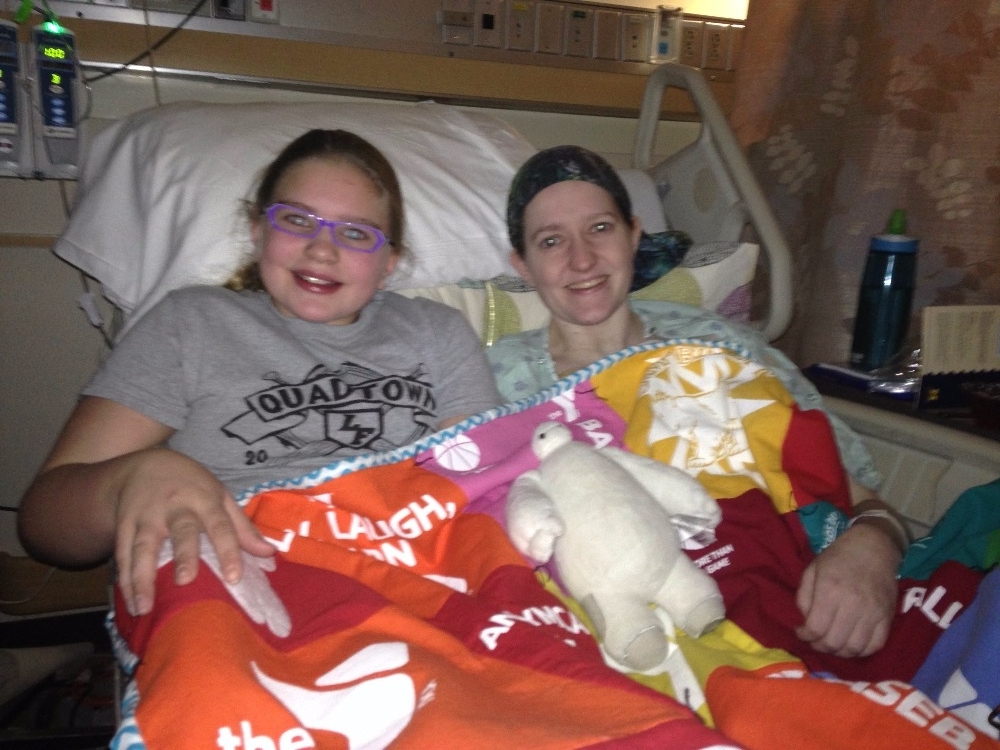 Above: A visit with my cousins during a rough hospital stay in January brought me a lot of joy <3 I am truly blessed by the support of my family, near and far. Struggling to breathe, they found several serious blood clots in both of my lungs and contributed it to the IVIG treatment that was helping me make leaps and bounds of progress. Subsequently, IVIG was devastatingly deemed too dangerous to be a treatment option any more. 7,984 thumbs down, heartbroken, and crying emojis go here...
Above: A visit with my cousins during a rough hospital stay in January brought me a lot of joy <3 I am truly blessed by the support of my family, near and far. Struggling to breathe, they found several serious blood clots in both of my lungs and contributed it to the IVIG treatment that was helping me make leaps and bounds of progress. Subsequently, IVIG was devastatingly deemed too dangerous to be a treatment option any more. 7,984 thumbs down, heartbroken, and crying emojis go here...
We anxiously awaited these test results in Cleveland in September. When I was called back into an exam room, my doctor reviewed the results: I was diagnosed with global dysmotility (meaning my stomach AND intestines have stopped moving food forward normally) with the prognosis of, “it’s very likely that you’ll need a lifetime of IV nutrition through a Hickman”. This Hickman central line is saving my life with IV nutrition, but it doesn’t come without a price. Rules of the Hickman central line include having no contact with oceans or rivers or lakes or streams. Pool use is possible under stringent conditions, as long as it stayed completely dry.
It was probably the heaviest day I'd experienced at the Clinic and the beginning of coming to terms with grief I found coming from all directions: grieving the ability to eat food, grieving my previous level of independence and vigorous active life, and distress about my ability to be in the water. The three and a half hour drive in the car from that diagnostic appointment in Cleveland allowed plenty of time to let my mind race a thousand miles an hour and figure out how I would pick up the pieces of my shattered heart. Some of my thoughts were irrational (“I should get a puppy”), while other thoughts came back to the food issue (“How does a non-eater exist in a food centric society?”).
But the most pervasive thought I returned to over and over again, was realizing a huge piece of my life and sense of identity - spending time working and playing in the water - suddenly became out of reach. Losing my ability to surf was my biggest concern. A close second thought was about how much I love to teach lifeguarding at the Y but a requisite to teach is to hold a current lifeguard certification. Being able to jump in at any moment is a significant requirement... I felt confident I could figure out how to work around other obstacles at hand, but this was a firm line not to be crossed: no water access unless I wanted to risk infection in my Hickman life line.
Since the diagnosis of global dysmotility, I've had one more life changing tube added to my body: a gastric tube, otherwise known as a PEG tube. It is used to vent and drain anything in my stomach with the goal of reducing nausea and vomiting. It took months to get over how gross this tube was in mind, but the significant relief I feel from the constant nausea and daily vomiting is unbelievable. I don't throw up every single day any more (HOORAY!). It is still another tube, with it's own set of rules similar to my Hickman line. Again, the biggest rule being to protecting it from the water.
When I just had the Hickman, I could layer on a nine piece dressing that would help keep it water resistant as long as I didn’t go in above my abdomen. It took about 20 minutes just to put the dressing on - all part of an already exhausting process: pack my swim bag, change into the right clothes, get in the car, pull out the wheelchair and load up the backpack holding my IV nutrition, etc. It feels like a workout before I even hit the locker room. Now, not only do I have two areas to protect, the location of the gastric tube placement also meant I shouldn't go in further than about 3 feet of water. That’s a whole lot of effort for little reward, even though I love the pool and it has been pivotal to my rehabilitation in the past.
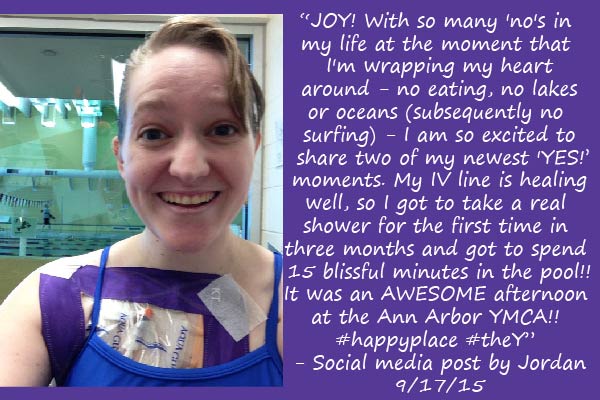 Above: my first time back in the water after ten months.
Above: my first time back in the water after ten months.
I believe there’s always a solution for what life throws at me. I may not like the solution or would prefer a different route would be possible, but there is always, always, always a way through it all. Today, I’m continually learning how to live my best life without eating food in the same way most other people do, particularly during times of celebration. I’ve realized that a puppy is a terrible idea at the moment (my cat, Sprout, would probably terrorize the little guy anyway…). But, a mountain of emotion still exists about the water. It still breaks my heart and brings strong emotions welling to the surface to think about the last time I was on a surfboard
It’s easy to wonder how my most recent experience surfing, over a year and a half ago, might have changed had I known then that it would be a while until I’d be back on a board again. In many ways, I’m grateful that we can’t tell the future. The last time I was in the ocean, it was a beautiful day on the water and watching the sea lions and otters close by, goofing around in their aquatic playground, was a riot. If I knew that there were no guarantees I'd be back on a board again, I can only imagine my tears would have blinded me from appreciating the gift of being in the water at all.
In the same token, the prognosis I was given can’t tell the future either. My care team and I are at a point where we've chased down treatment after treatment after treatment without significant success. We don't have another clear treatment path to run down at this point and are now transitioning from treatment to focusing our energy on continuing what works to manage my symptoms, with the goal of improving my quality of life.
My team at the Cleveland Clinic and I constantly learn new things about my overall health and we will continue to search for solutions, with the understanding that some of those solutions may be years down the road. Right now, my life all about is just taking things day by day and being mindful of this current moment. Thankfully, some days are easier than others. I live in a body that seems to follow the stock market - it has dramatic ups and downs. While I do have influence in this circumstance, I don’t have control over it or how it progresses. However, I recently found a solution that could be a HUGE game changer that could help bring me back to the pool and with it, the potentially recover a part of this challenge that drastically affects my quality of life: getting back in the water.
A company called Hammond Drysuits makes a HICKMAN dry suit designed specifically for people like me who have a Hickman central line and it could help me get back in the pool!! I’ve been on the lookout for a solution to help me get back in the pool, but most dry suits cover the whole body and are usually baggy -- not necessarily designed for being active in the water. This suit is a “shortie”: it starts above the knee and elbow and can even be designed to accommodate wearing an IV nutrition backpack while in the water. AMAZING!!!
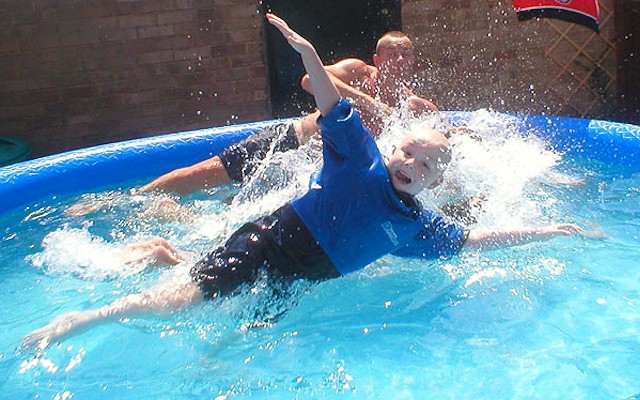 Above: Look at that happiness! A youth Hammond Drysuit user.
Above: Look at that happiness! A youth Hammond Drysuit user.
I have a difficult time asking for help, whether the request is as small as helping me pick something up off the floor or for something big like this: I need your help to fundraise the $2,000 it will take to help me return to the water. To have the drysuit made and shipped to the US is $600. Brand new, the recommended recumbent trike can cost as much as $3000 but I've scoured the internet and found a plethora of used trikes in good condition for around $1,400.
$600 + $1400 = $2,000 for a priceless, much needed boost in my quality of life.
A lot of things have changed my life over the past two years in a direction that I’m not a fan of. The pool has been an essential part of my rehabilitation in the past, so a recumbent bike and Hickman drysuit could be life changing for the better. Please help me make a splash in the right direction by supporting me with a donation towards this cycle and suit!
With all my heart,
Jordan
PS - if you'd like to keep up with my story, I share it at www.carepages.com , page name: "jordiebugkeen".
For those of you who have been part of my story, strengthening me (and my family) throughout this difficult journey, you probably know my what has been going on from my posts on CarePages (page name: "JordieBugKeen") or text message updates from my awesome Mom. If you don't know the story I've been living, scroll down and I'll catch you up on this craziness.
This "long story short" letter is for the bold and brave who have been standing strong with me through it all:
WHAT!? Is this real life?! This is a HICKMAN drysuit, designed specifically for people like me who have a Hickman central line and it could help me get back in the pool!! Now with two different ports to protect from getting wet, spending time in the water is difficult and potentially dangerous. I’ve been on the lookout for a solution but most dry suits cover the whole body and are usually baggy -- not necessarily designed for being active in the water. This suit is a “shortie”: it starts above the knee and elbow and can even be designed to accommodate wearing an IV nutrition backpack while in the water. AMAZING!!!
It all sounds too good to be true, so (of course) here's the catch: the suit is made in England by Hammond Drysuit and is pretty expensive. Additionally, it's a pretty big leap to get back in the pool from where I am with my health now. To help build up my cardiovascular capacity, exercising on a recumbent bike is ideal with the postural orthostatic tachycardia (POTS) because it will help my heart build strength without the additional strain of being upright, causing my heart to race and feel light headed. My team at the Cleveland Clinic have recommended adding five minutes on a recumbent bike, three times a week, to my current at-home PT program. While we could buy a recumbent exercise bike for the home, a better suggestion was to invest in a quality recumbent trike that, like the drysuit, would be beneficial for my heart physically and emotionally. The bike suggested to help make this transition to the pool is not an exercise machine stuck indoors: it's a real bike designed for outdoor use and can be also be used stationary inside during the winter. Most importantly, because it can be fitted with an electric motor, it would allow me to join in on family bike rides and go on runs with my sister - something I deeply miss.
You probably know that I have a difficult time asking for help, whether the request is as small as helping me pick something up off the floor or for something big like this: I need your help to fundraise $2,000 to help me return to the water. To have the drysuit made and shipped to the US is $600. Brand new, the recommended recumbent trike can cost as much as $3000 but I've scoured the internet and found a plethora of used ones in good condition for around $1,400.
$600 + $1400 = $2,000 for a priceless, much needed boost in my quality of life.
A lot of things have changed my life over the past two years in a direction that I’m not a fan of. The pool has been an essential part of my rehabilitation in the past, so a recumbent bike and Hickman drysuit could be life changing for the better. Please help me make a splash in the right direction by supporting me with a donation towards this cycle and suit!
With lots of love and gratitude,
Jordan
* * * * * * * * * * * * * * * * * * * * * * * * * * * * * * * * * * * * * * *

For those of you who may not know how I, (a healthy, able bodied, independent, 23 year old marathon runner and former national athlete, with great friends and a full time job I loved in California), turned into an almost 25 year old who is completely dependent on my family and caregivers (as I am not safe to drive, unable to walk unassisted, struggling with fine motor skills, a fall risk needing constant supervision, and can't digest food, etc.), this letter is just for you. Hopefully it'll help wrap your mind and heart around this chaotic, foreign life my family and I have been experiencing:

Hi friends,
My life has been turned upside down for almost two years now since catching an infection in 2014 from one of my favorite places in the whole world: the ocean.
In the summer of 2014, I was under the warm June sun in California with sixty other adults, all strangers running in the grass, playing tag like we were kids. The gentle giants of the redwood forest watched over us, swaying slightly in the background. To say this first day of staff training was a magical start to the summer camp season at YMCA Camp Campbell would be an understatement. I ended up 2,000 miles from home in this grassy field, away from the Ann Arbor YMCA after four incredible summers of learning and leading day camp in Michigan, because I fell in love with surfing while visiting California the year before. Santa Cruz, a surfing hot spot, was a short drive from camp. It was on the beach and the boardwalk that several of the sixty strangers turned into some of my greatest friends.
On our 4th of July weekend off, we were on the beach and I was in the water body boarding with a handful of friends. The next day, I felt so sick. We were back at camp in an all staff meeting to kick off another life changing week for our campers when I had to excuse myself from the meeting and barely made it to the bathroom to throw up. I was feeling a little feverish but brushed it away because, after years of dealing with Complex Regional Pain Syndrome (CRPS) as a teen, I was a pro at persevering through physical difficulties to do what needed to get done. But, I was unaware of how vulnerable my body actually was after dealing with CRPS (also known as Reflex Sympathetic Dystrophy or RSD). It can cause widespread pain out of proportion to the injury that caused it and is considered a neuro-inflammatory disorder, meaning it has both neurological and immunological complications.
For me, CRPS/RSD started as a 12 year old after spraining my knee while skiing for the first time. It took almost two years to diagnose it and another three years to find an effective treatment. I spent those five years on crutches or in a wheelchair before the miracle of a spinal cord stimulator (SCS) took away my severe pain with the touch of a button. Untethered from the pain, I found what felt like limitless freedom.
I launched myself into a life that was beyond imagination, more than anything I hoped for years that I would be able to experience. I went to college and made wonderful friends. I ran the Chicago Marathon.
I traveled with Young Life to serve at a camp in the Dominican Republic. I got to go to be the older sister again - a role in our family that I take great pride in. I cheered my brother on at his football games and went out to lunch with my sisters.
 Christmas 2013
Christmas 2013I was vice captain of the national netball team and competed internationally in South Africa for the World Games. I held (and continue to hold) a passion for the Y and loved serving our community through youth sports and camp.

My world was full of possibility and I could finally say "yes" to so many adventures, including moving to California. I felt far from health challenges of the past and didn't imagine for a minute that I'd be back in crisis mode today.
Above: a full body, uncontrollable and painful tremor. This is only 23 seconds and it never let up, continuing at this pace for nearly two hours before my muscles lock up, contorting my body in excruciating pain.
My doctors at the Cleveland Clinic, who treated the CRPS/RSD when I was a teen, weren’t at all shocked that I was the only one of my six friends in the ocean to become seriously ill, specifically because of my history with CRPS/RSD. Not only was I oblivious to my delicate immune system, I also had no idea that the moment I excused myself from our meeting to hustle to the bathroom would just the beginning of the many, many days ahead of constant nausea, abdominal pain, and vomiting.
Fast forward to September of 2015: my parents and I are sitting in a waiting room at the Cleveland Clinic. It was the day we'd have results about the extent of damage the infection had on my digestive system function. In between this moment in Cleveland and when I ran to the bathroom at camp the year and a half before, huge changes happened. I left a month long hospitalization at Stanford in December of 2014 with two new diagnoses and one heart breaking resignation from my year round job at camp. I moved back to Michigan, dependent on my family and the expertise of the Cleveland Clinic to treat the gastroparesis and POTS: both dysfunctions of autonomic nervous system, the part of the system that takes care of vital functions that we don't have to think about in order for them to happen, including: breathing, blood pressure, and digestion. Both diagnoses were contributed to nerve damage from the ocean based infection.
Gastroparesis literally means “stomach paralysis”. I could eat food, but it would sit painfully in my stomach for hours until I threw up because it doesn't move forward. As for the POTS, my blood pressure is usually very low and simple movements, like sitting up in bed, can cause my heart rate to race out of control as though I just finished sprinting. By September 2015, my condition continued to deteriorate rapidly. I wasn’t eating any food or even drinking any water because it made me so nauseous and vomit. I relied on IV nutrition, just as I do today, through a central line called a Hickman.
 Above: A visit with my cousins during a rough hospital stay in January brought me a lot of joy <3 I am truly blessed by the support of my family, near and far. Struggling to breathe, they found several serious blood clots in both of my lungs and contributed it to the IVIG treatment that was helping me make leaps and bounds of progress. Subsequently, IVIG was devastatingly deemed too dangerous to be a treatment option any more. 7,984 thumbs down, heartbroken, and crying emojis go here...
Above: A visit with my cousins during a rough hospital stay in January brought me a lot of joy <3 I am truly blessed by the support of my family, near and far. Struggling to breathe, they found several serious blood clots in both of my lungs and contributed it to the IVIG treatment that was helping me make leaps and bounds of progress. Subsequently, IVIG was devastatingly deemed too dangerous to be a treatment option any more. 7,984 thumbs down, heartbroken, and crying emojis go here...We anxiously awaited these test results in Cleveland in September. When I was called back into an exam room, my doctor reviewed the results: I was diagnosed with global dysmotility (meaning my stomach AND intestines have stopped moving food forward normally) with the prognosis of, “it’s very likely that you’ll need a lifetime of IV nutrition through a Hickman”. This Hickman central line is saving my life with IV nutrition, but it doesn’t come without a price. Rules of the Hickman central line include having no contact with oceans or rivers or lakes or streams. Pool use is possible under stringent conditions, as long as it stayed completely dry.
It was probably the heaviest day I'd experienced at the Clinic and the beginning of coming to terms with grief I found coming from all directions: grieving the ability to eat food, grieving my previous level of independence and vigorous active life, and distress about my ability to be in the water. The three and a half hour drive in the car from that diagnostic appointment in Cleveland allowed plenty of time to let my mind race a thousand miles an hour and figure out how I would pick up the pieces of my shattered heart. Some of my thoughts were irrational (“I should get a puppy”), while other thoughts came back to the food issue (“How does a non-eater exist in a food centric society?”).
But the most pervasive thought I returned to over and over again, was realizing a huge piece of my life and sense of identity - spending time working and playing in the water - suddenly became out of reach. Losing my ability to surf was my biggest concern. A close second thought was about how much I love to teach lifeguarding at the Y but a requisite to teach is to hold a current lifeguard certification. Being able to jump in at any moment is a significant requirement... I felt confident I could figure out how to work around other obstacles at hand, but this was a firm line not to be crossed: no water access unless I wanted to risk infection in my Hickman life line.
Since the diagnosis of global dysmotility, I've had one more life changing tube added to my body: a gastric tube, otherwise known as a PEG tube. It is used to vent and drain anything in my stomach with the goal of reducing nausea and vomiting. It took months to get over how gross this tube was in mind, but the significant relief I feel from the constant nausea and daily vomiting is unbelievable. I don't throw up every single day any more (HOORAY!). It is still another tube, with it's own set of rules similar to my Hickman line. Again, the biggest rule being to protecting it from the water.
When I just had the Hickman, I could layer on a nine piece dressing that would help keep it water resistant as long as I didn’t go in above my abdomen. It took about 20 minutes just to put the dressing on - all part of an already exhausting process: pack my swim bag, change into the right clothes, get in the car, pull out the wheelchair and load up the backpack holding my IV nutrition, etc. It feels like a workout before I even hit the locker room. Now, not only do I have two areas to protect, the location of the gastric tube placement also meant I shouldn't go in further than about 3 feet of water. That’s a whole lot of effort for little reward, even though I love the pool and it has been pivotal to my rehabilitation in the past.
 Above: my first time back in the water after ten months.
Above: my first time back in the water after ten months.I believe there’s always a solution for what life throws at me. I may not like the solution or would prefer a different route would be possible, but there is always, always, always a way through it all. Today, I’m continually learning how to live my best life without eating food in the same way most other people do, particularly during times of celebration. I’ve realized that a puppy is a terrible idea at the moment (my cat, Sprout, would probably terrorize the little guy anyway…). But, a mountain of emotion still exists about the water. It still breaks my heart and brings strong emotions welling to the surface to think about the last time I was on a surfboard
It’s easy to wonder how my most recent experience surfing, over a year and a half ago, might have changed had I known then that it would be a while until I’d be back on a board again. In many ways, I’m grateful that we can’t tell the future. The last time I was in the ocean, it was a beautiful day on the water and watching the sea lions and otters close by, goofing around in their aquatic playground, was a riot. If I knew that there were no guarantees I'd be back on a board again, I can only imagine my tears would have blinded me from appreciating the gift of being in the water at all.
In the same token, the prognosis I was given can’t tell the future either. My care team and I are at a point where we've chased down treatment after treatment after treatment without significant success. We don't have another clear treatment path to run down at this point and are now transitioning from treatment to focusing our energy on continuing what works to manage my symptoms, with the goal of improving my quality of life.
My team at the Cleveland Clinic and I constantly learn new things about my overall health and we will continue to search for solutions, with the understanding that some of those solutions may be years down the road. Right now, my life all about is just taking things day by day and being mindful of this current moment. Thankfully, some days are easier than others. I live in a body that seems to follow the stock market - it has dramatic ups and downs. While I do have influence in this circumstance, I don’t have control over it or how it progresses. However, I recently found a solution that could be a HUGE game changer that could help bring me back to the pool and with it, the potentially recover a part of this challenge that drastically affects my quality of life: getting back in the water.
A company called Hammond Drysuits makes a HICKMAN dry suit designed specifically for people like me who have a Hickman central line and it could help me get back in the pool!! I’ve been on the lookout for a solution to help me get back in the pool, but most dry suits cover the whole body and are usually baggy -- not necessarily designed for being active in the water. This suit is a “shortie”: it starts above the knee and elbow and can even be designed to accommodate wearing an IV nutrition backpack while in the water. AMAZING!!!
 Above: Look at that happiness! A youth Hammond Drysuit user.
Above: Look at that happiness! A youth Hammond Drysuit user.I have a difficult time asking for help, whether the request is as small as helping me pick something up off the floor or for something big like this: I need your help to fundraise the $2,000 it will take to help me return to the water. To have the drysuit made and shipped to the US is $600. Brand new, the recommended recumbent trike can cost as much as $3000 but I've scoured the internet and found a plethora of used trikes in good condition for around $1,400.
$600 + $1400 = $2,000 for a priceless, much needed boost in my quality of life.
A lot of things have changed my life over the past two years in a direction that I’m not a fan of. The pool has been an essential part of my rehabilitation in the past, so a recumbent bike and Hickman drysuit could be life changing for the better. Please help me make a splash in the right direction by supporting me with a donation towards this cycle and suit!
With all my heart,
Jordan
PS - if you'd like to keep up with my story, I share it at www.carepages.com , page name: "jordiebugkeen".
Organizer
Jordan Keen
Organizer
Webster Township, MI